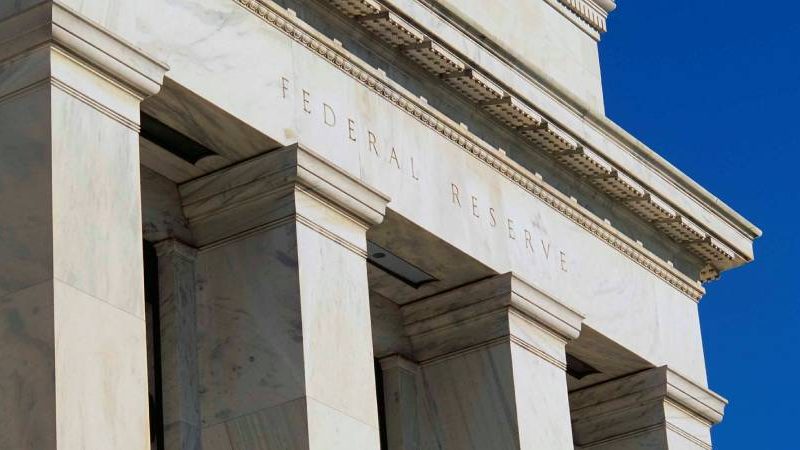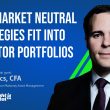by Brian Levitt, Global Market Strategist, Invesco Canada
U.S. Federal Reserve (Fed) Chair Jerome Powell has signaled in testimony to Congress that the Fed is likely to accelerate the tapering of asset purchases in December.
The messaging came as some surprise to the market as concerns over the Omicron variant are rife. Investors had grown used to the Fed managing the downside risks to the economy in what had been a structurally weak inflationary environment. We would, however, expect the Fed to back off its more hawkish posture if the Omicron variant proves to be a persistent challenge to the global economy.
Markets immediately responded to the prospect of tighter-than-expected policy — the U.S. Treasury yield curve flattened,1 oil prices fell,2 and cyclical sectors such as energy, materials, industrials, and financials led the U.S. equity market lower following the Nov. 30 testimony.3
Here’s five thoughts on the likely prospect of accelerated tapering and the market’s reaction:
- Market volatility and drawdowns generally don’t emerge out of nowhere. They tend to be the result of policy uncertainty and/or unexpected changes in policy. While it had been widely expected that the Fed would begin to taper asset purchases, it comes as a surprise for the Fed to accelerate the timeline to end quantitative easing with the uncertainty surrounding the Omicron variant and its potential impact to the global economy so prevalent.
- The fear of a hawkish policy mistake was prevalent in the bond market on Tuesday. A prevailing narrative among investors had been that bond yields would rise as the Fed provided less support to the U.S. Treasury market, as was the case during the 2013 “taper tantrum.” The opposite happened on Tuesday as long bond yields plummeted amid concerns that the Fed was proceeding toward tighter policy at a potentially inopportune time. Importantly, financial conditions, which tightened modestly over the past week, remain historically easy and well below levels reached during the 2013 taper tantrum and the 2015 Fed rate hike.
- The market, as represented by the fed funds rate, is pricing in two interest rate hikes in 2022.4 In our opinion, it is too soon to extrapolate future rate hikes given the uncertainty of the Omicron variant. The Fed backed off its tighter policy stance multiple times over the prior cycle, and we would expect them to do the same should economic and employment conditions deteriorate.
- Typically, it’s not the first interest rate hike that matters. Rather, it’s the last interest rate hike that tends to be of greater importance. A review of past initial rate hikes in business cycles (’94, ‘04, ’15) indicates that equity returns were robust in the 12 months prior to, and 36 months post, the first interest rate hike, weakening only when there was a meaningful bear flattening of the U.S. Treasury yield curve.5 The U.S. Treasury yield curve has flattened in recent days but is relatively steep compared to periods that presaged recessions.
- Our expectation has been for the economy to moderate from a robust expansion toward a more sustainable rate of growth. Admittedly, we did not expect the combined catalyst of the Omicron variant and a more hawkish Fed to be fast tracking the markets to our views. As the economy slows, we would expect market leadership to shift from the so-called recovery and reflation trades toward longer duration assets and structural growth businesses.
1 Source: Bloomberg, L.P., 11/30/21. As represented by changes in the 2-year and 10-year U.S. Treasury rates.
2 Source: Bloomberg, L.P., 11/30/21. As represented by West Texas Intermediate crude oil.
3 Source: Bloomberg, L.P., 11/30/21. As represented by the S&P 500 Index.
4 Source: Bloomberg, L.P., 11/30/21. Fed funds futures are financial contracts that represent the market opinion of where the daily official federal funds rate will be at the time of the contract expiry. The federal funds rate is the rate at which banks lend balances to each other overnight.
5 Source: Bloomberg, L.P. Returns are represented by the S&P 500 Index, 11/30/21. The S&P 500 Index is a market-capitalization-weighted index of the 500 largest domestic U.S. stocks. Indices are unmanaged and cannot be purchased directly by investors. Index performance is highlighted for illustrative purposes only and does not predict or depict the performance of any investment. Past performance does not guarantee future results.
The post Five thoughts on a faster U.S. Federal Reserve taper appeared first on Invesco Canada blog.
This post was first published at the official blog of Invesco Canada.














